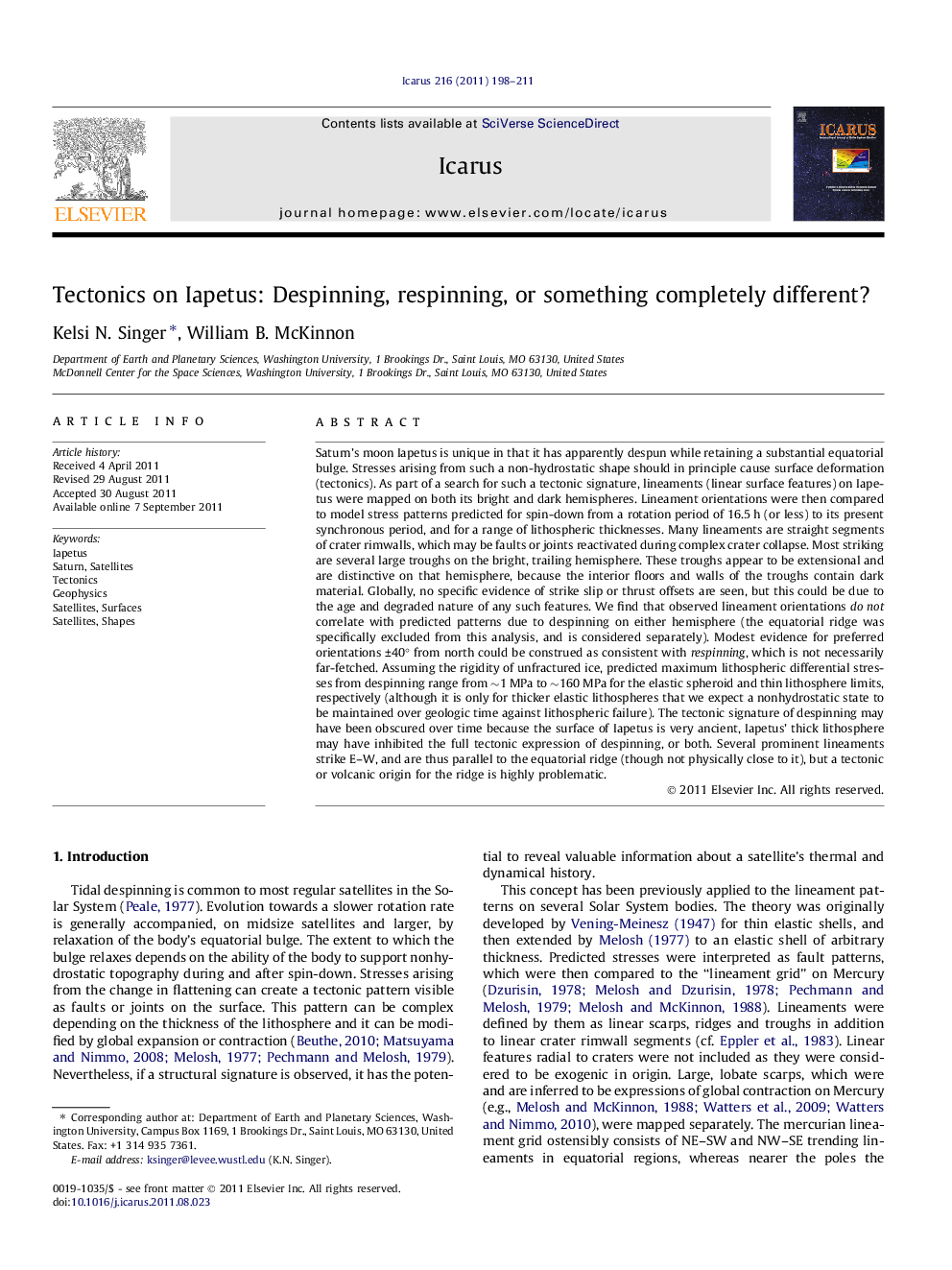| کد مقاله | کد نشریه | سال انتشار | مقاله انگلیسی | نسخه تمام متن |
|---|---|---|---|---|
| 1773568 | 1021138 | 2011 | 14 صفحه PDF | دانلود رایگان |

Saturn’s moon Iapetus is unique in that it has apparently despun while retaining a substantial equatorial bulge. Stresses arising from such a non-hydrostatic shape should in principle cause surface deformation (tectonics). As part of a search for such a tectonic signature, lineaments (linear surface features) on Iapetus were mapped on both its bright and dark hemispheres. Lineament orientations were then compared to model stress patterns predicted for spin-down from a rotation period of 16.5 h (or less) to its present synchronous period, and for a range of lithospheric thicknesses. Many lineaments are straight segments of crater rimwalls, which may be faults or joints reactivated during complex crater collapse. Most striking are several large troughs on the bright, trailing hemisphere. These troughs appear to be extensional and are distinctive on that hemisphere, because the interior floors and walls of the troughs contain dark material. Globally, no specific evidence of strike slip or thrust offsets are seen, but this could be due to the age and degraded nature of any such features. We find that observed lineament orientations do not correlate with predicted patterns due to despinning on either hemisphere (the equatorial ridge was specifically excluded from this analysis, and is considered separately). Modest evidence for preferred orientations ±40° from north could be construed as consistent with respinning, which is not necessarily far-fetched. Assuming the rigidity of unfractured ice, predicted maximum lithospheric differential stresses from despinning range from ∼1 MPa to ∼160 MPa for the elastic spheroid and thin lithosphere limits, respectively (although it is only for thicker elastic lithospheres that we expect a nonhydrostatic state to be maintained over geologic time against lithospheric failure). The tectonic signature of despinning may have been obscured over time because the surface of Iapetus is very ancient, Iapetus’ thick lithosphere may have inhibited the full tectonic expression of despinning, or both. Several prominent lineaments strike E–W, and are thus parallel to the equatorial ridge (though not physically close to it), but a tectonic or volcanic origin for the ridge is highly problematic.
► Lineaments (linear surface features) on Iapetus mapped, and despinning stresses calculated.
► Lineament orientations inconsistent with predicted pattern from despinning.
► Long-term support of oblate shape requires lithosphere >50-km thick.
► Equatorial ridge unlikely to be tectonic.
Journal: Icarus - Volume 216, Issue 1, November 2011, Pages 198–211